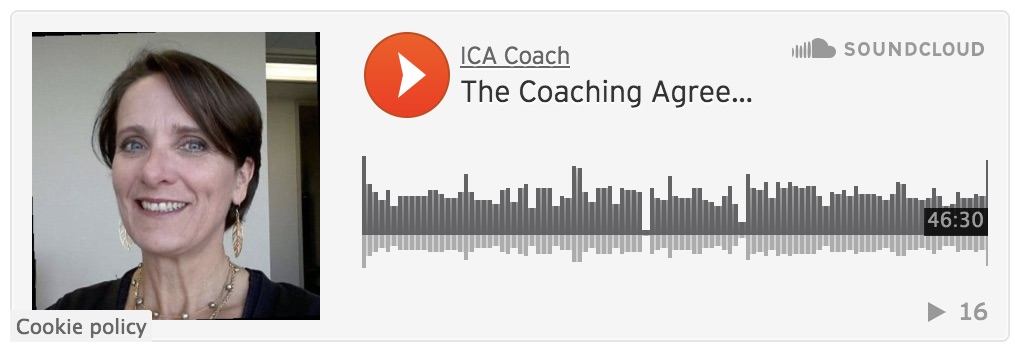The Coaching Agreement is at the core of any coaching relationship and being able to create and demonstrate a coaching agreement is fundamental to coaching at both ACC and PCC level.
At ICA we teach our coaches how to set up a coaching agreement for the coaching relationship, and then also for each coaching session. This agreement reflects the goals of the client, and is a tool to keep both coach and client accountable.
We recently opened up a Coaching Lab to our wider community. Lorna Poole (PCC) explains the theory behind the Coaching Agreement including how to set one up, and the returning benefits to both coach and client. She then demonstrates this via a live coaching session where she takes on the role of coach and uses a ‘stop the clock’ technique to highlight important steps in the process.
Lorna Poole (PCC) demonstrates how to set and apply a Coaching Agreement
Here’s what you’re listening for…
The initial agreement starts with a conversation on the roles of the coach and the client, what coaching is and what it is not. A written agreement detailing this information as well as addressing ethics and confidentiality is often used and signed by the coach and the client. For a more dynamic written agreement you could ask your client to add their own paragraph which describes what they want from the coaching and what they commit to doing. This gives a strong start to the coaching, a clear foundation from which to work together and encourages openness.
The second part of the competency says it is the responsibility of the coach to ask the client at the beginning of the session what they want to focus on and achieve in that session. At the ACC credentialing level, this is adequate. At the PCC level, the coach is asking how the client measures success for the topic. By the MCC level the coach is checking in with the client to ensure that the direction is continuing to serve the client.
